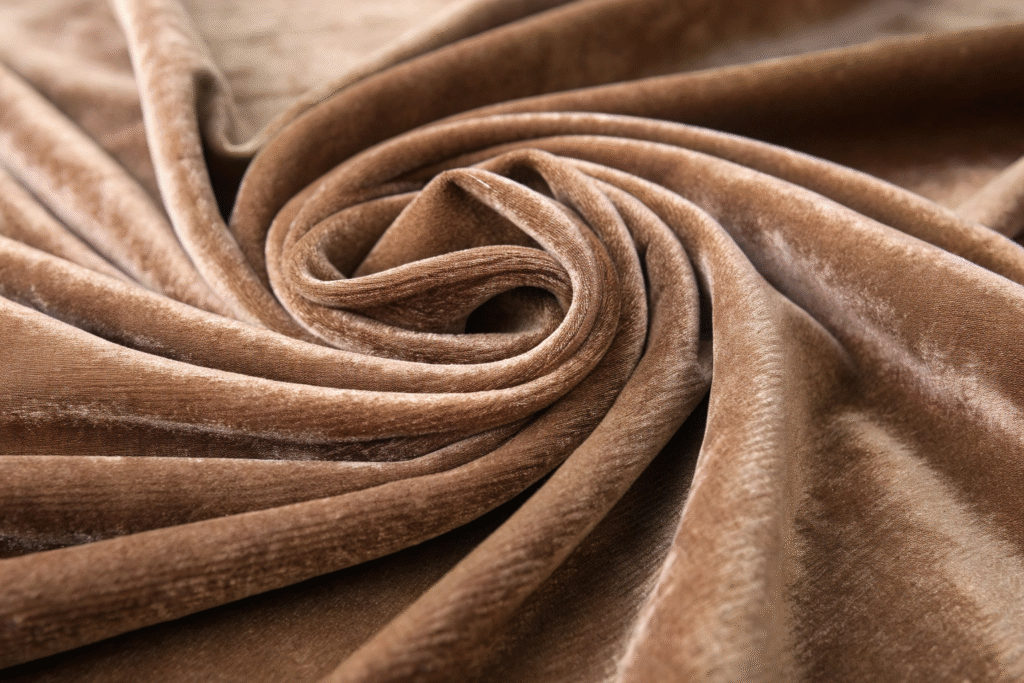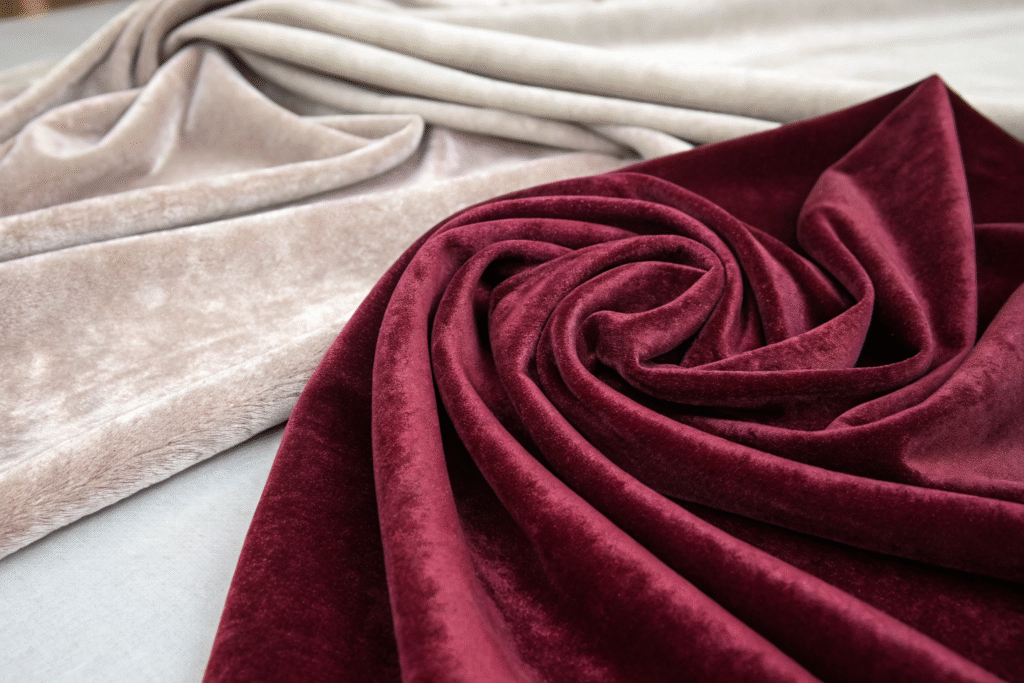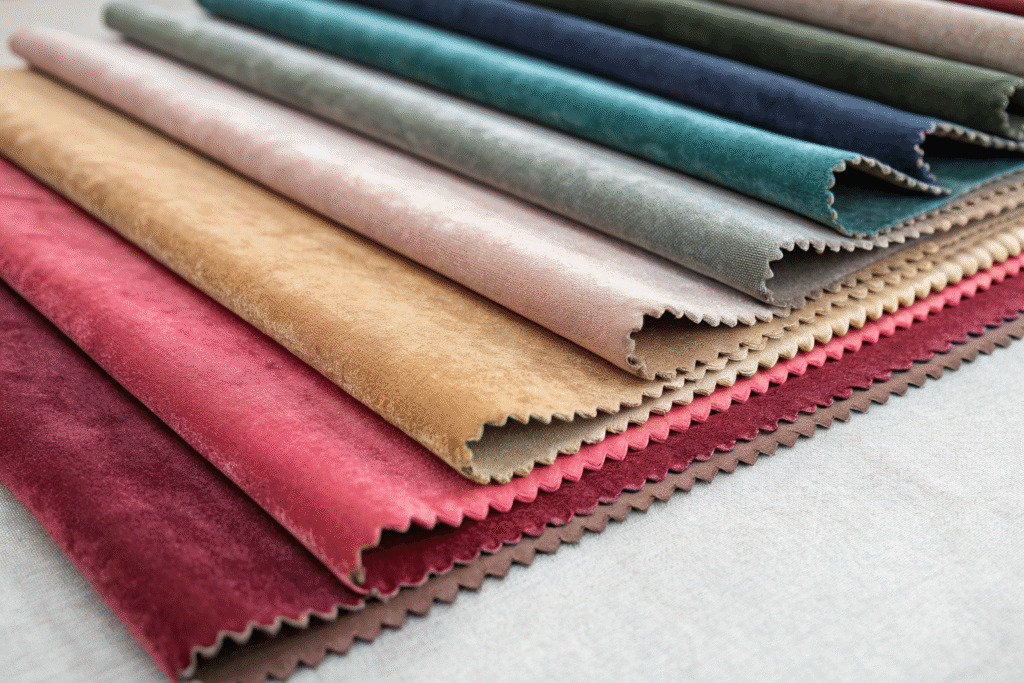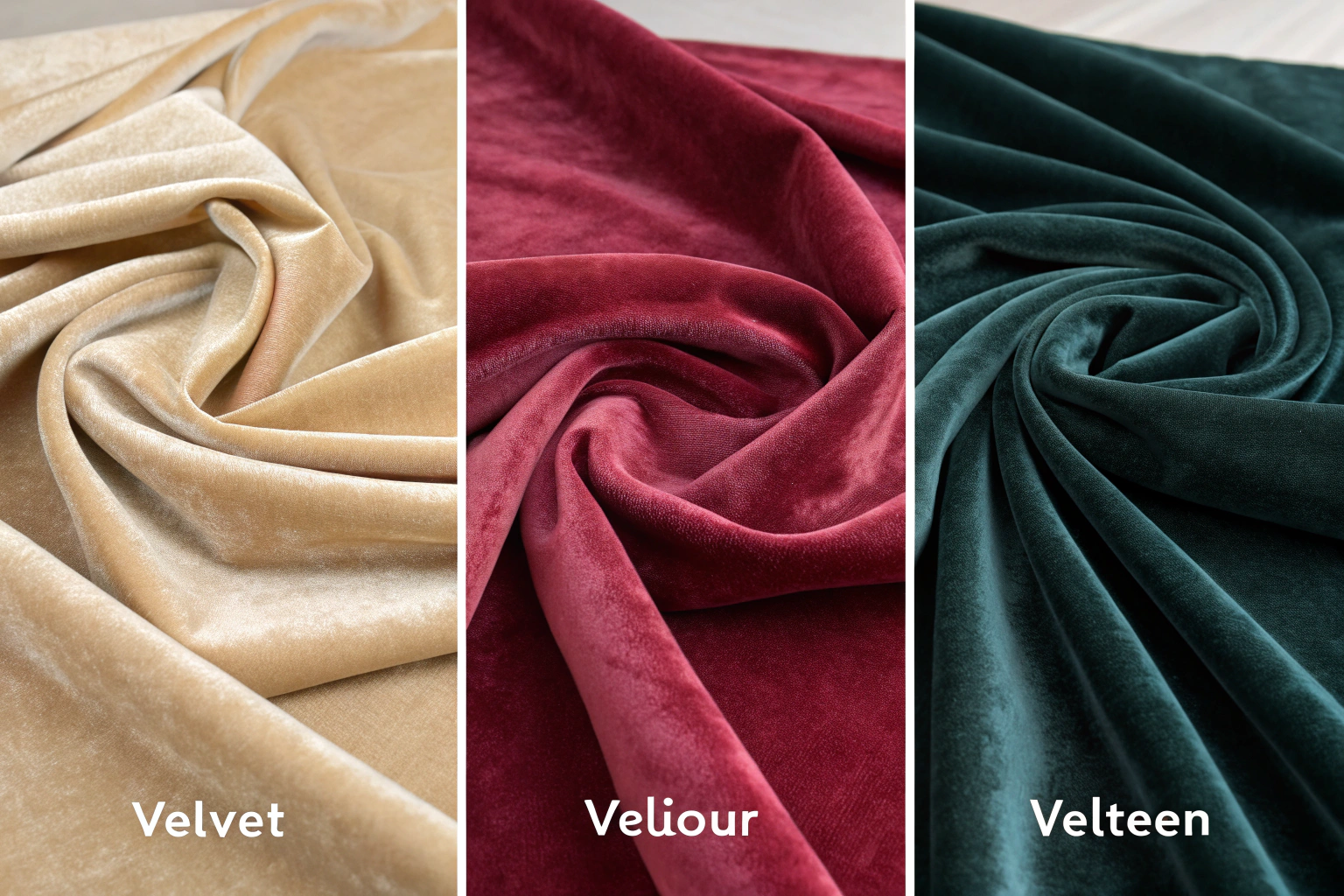Velvet, velour, and velveteen are often mentioned together due to their similar luxurious textures. However, these three fabrics have distinct characteristics that make each one unique. Whether you're selecting a fabric for high-end fashion, home décor, or casual wear, understanding the differences between these fabrics is key. This article will break down the properties, uses, and advantages of velvet, velour, and velveteen, helping you make an informed choice for your next project.
Velvet, velour, and velveteen all feature a plush, soft texture that’s created by raised fibers. However, the method of construction, fiber composition, and applications vary. Velvet is traditionally made from silk or synthetic fibers, offering a dense, luxurious pile. Velour, made from cotton or polyester, is stretchier and has a more casual feel, while velveteen, made from cotton, mimics the appearance of velvet but is typically more affordable. Knowing these differences helps you select the best fabric for your intended use, whether it's clothing, upholstery, or other design projects.
While they may appear similar at first glance, the subtle differences between velvet, velour, and velveteen can impact the look and feel of your final product. Let’s explore the individual qualities of each fabric and how they’re best used in various industries.
What is Velvet?
Velvet is one of the most luxurious fabrics available, known for its rich texture and sheen. Traditionally made from silk, modern velvet can also be made from synthetic fibers such as polyester, which provides a more budget-friendly option while retaining the plush feel.
Velvet features a dense, soft pile that’s created by weaving two layers of fabric together, followed by cutting the fibers to create the plush surface. The pile is evenly distributed, giving velvet its signature smooth and soft texture. Velvet has a natural sheen that reflects light in different directions, adding to its luxurious appearance, making it perfect for high-end clothing, evening gowns, and luxury upholstery.
The texture of velvet is smooth and incredibly soft, contributing to its appeal for formal or upscale applications. Though durable, velvet is delicate and can be prone to crushing or marking, so it requires special care. Synthetic velvet, such as polyester velvet, offers a more practical alternative for everyday items, still maintaining the signature plush texture.

Why is Velvet Considered Luxurious?
Velvet’s softness, shine, and rich texture make it highly sought after for formal occasions and upscale textiles. Its ability to reflect light adds depth, enhancing its luxury feel.
How is Velvet Different from Other Fabrics?
What distinguishes velvet is its dense, velvety pile and unique texture that reflects light in varying ways, contributing to its rich, opulent appearance.
What is Velour?
Velour is often mistaken for velvet due to its similar texture, but it is distinct in its composition and feel. Unlike velvet, which is made from silk or synthetic fibers, velour is typically made from cotton or polyester, and it often includes a slight stretch.
Velour features a softer, less dense pile than velvet, offering a more relaxed feel. It’s commonly used for garments that prioritize comfort and flexibility, such as tracksuits, robes, and sweatshirts. Velour’s elasticity makes it more suited for casual or athleisure wear compared to the more formal velvet fabric.
Although velour shares a similar look to velvet, it’s generally lighter, softer, and more comfortable. Its stretchy nature makes it ideal for loungewear, activewear, and even home textiles where comfort and ease are key. While it doesn't have the dense pile or shine of velvet, it remains a popular choice for more casual applications.

How is Velour Different from Velvet?
Velour is stretchier and softer than velvet, making it more suitable for casual or comfortable clothing. It is often used for activewear and other items that require flexibility.
Why is Velour Used in Activewear?
Velour’s stretch and soft texture make it ideal for clothing that needs to be flexible and comfortable, such as loungewear and athleisure pieces.
What is Velveteen?
Velveteen is a cotton-based fabric that imitates the appearance and texture of velvet, but it’s typically less dense and more affordable. Velveteen offers a luxurious look similar to velvet but is a more practical option for those on a budget.
The production of velveteen involves weaving cotton fibers in a way that mimics the plush feel of velvet. Unlike velvet, which is created by weaving two layers, velveteen’s pile is produced by cutting the cotton fibers. Though it doesn’t have the same lustrous sheen as velvet, it still offers a velvety texture that is often used in fashion, upholstery, and home décor applications.
Velveteen is often chosen for its affordability compared to velvet. It offers a soft, velvety texture with a shorter pile and is easier to care for. Its versatility makes it suitable for both formal and casual applications, providing a luxurious feel at a lower price point. While it doesn't have the same reflective shine as velvet, it still gives a rich look that is ideal for many design projects.

How Does Velveteen Compare to Velvet in Price?
Velveteen is more affordable than velvet because it’s made from cotton rather than silk or premium synthetic fibers. It provides a similar appearance at a fraction of the cost.
What Are Common Uses for Velveteen?
Velveteen is often used for dresses, jackets, and home textiles, such as curtains and cushions. It offers a luxurious look and feel but is more accessible than velvet.
Conclusion
While velvet, velour, and velveteen share a soft, plush texture, they each have distinct characteristics that make them better suited for different purposes. Velvet is the epitome of luxury, ideal for formal attire and high-end home décor. Velour, with its stretch and softness, is better for casual and activewear, while velveteen offers a budget-friendly alternative to velvet, providing a similar look and feel. By understanding these fabrics' unique properties, you can make the right choice for your next project.
If you’re looking for quality velvet, velour, or velveteen fabric for your designs, Fumao Fabric can assist you. Our team offers tailored solutions for fashion, upholstery, and more. Reach out to our Business Director, Elaine, at elaine@fumaoclothing.com to explore our fabric options and how we can support your project.










